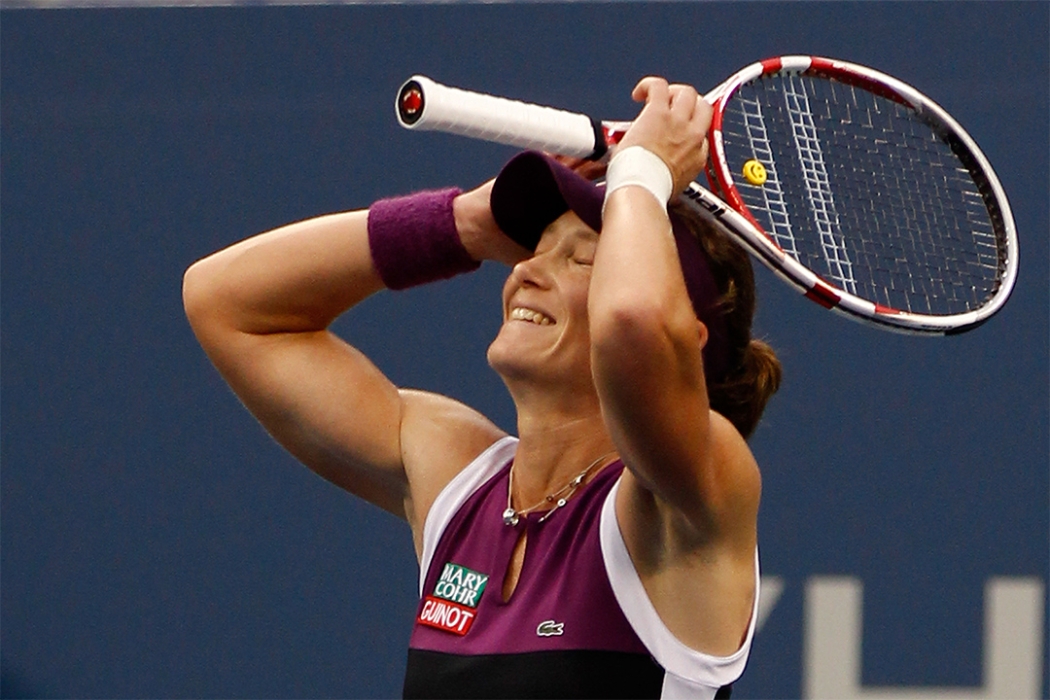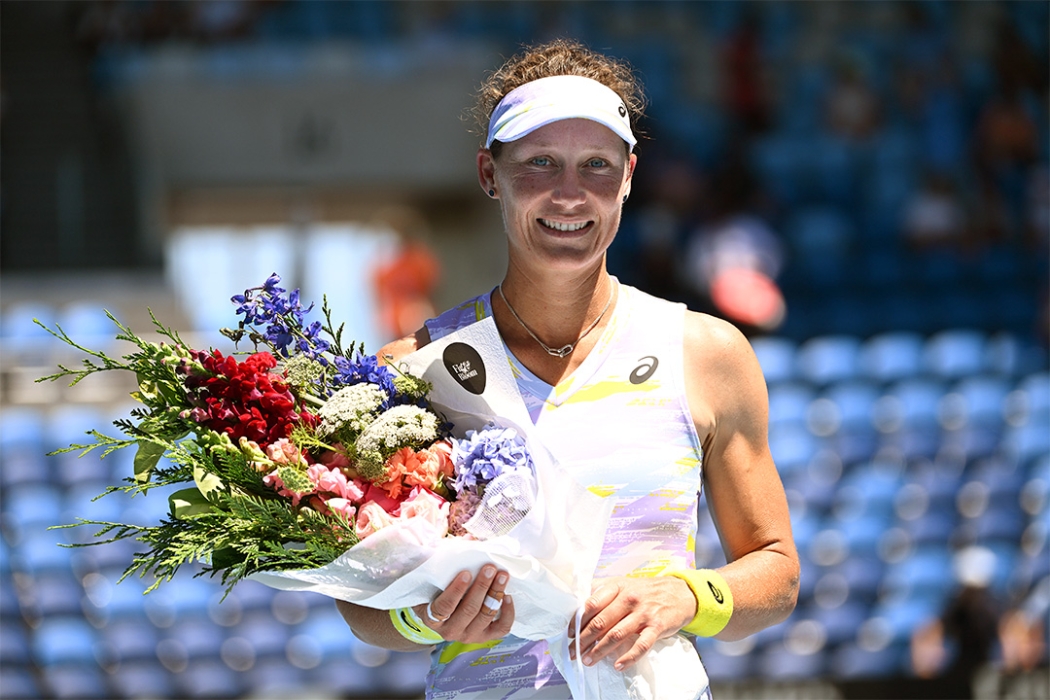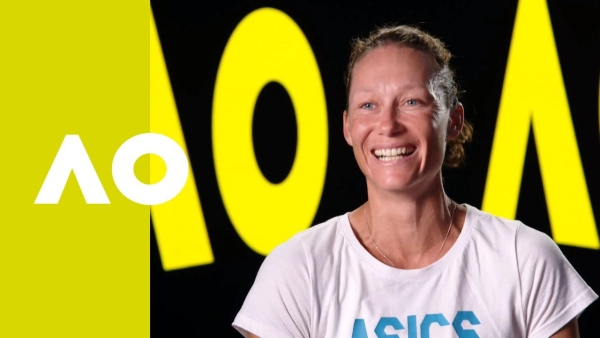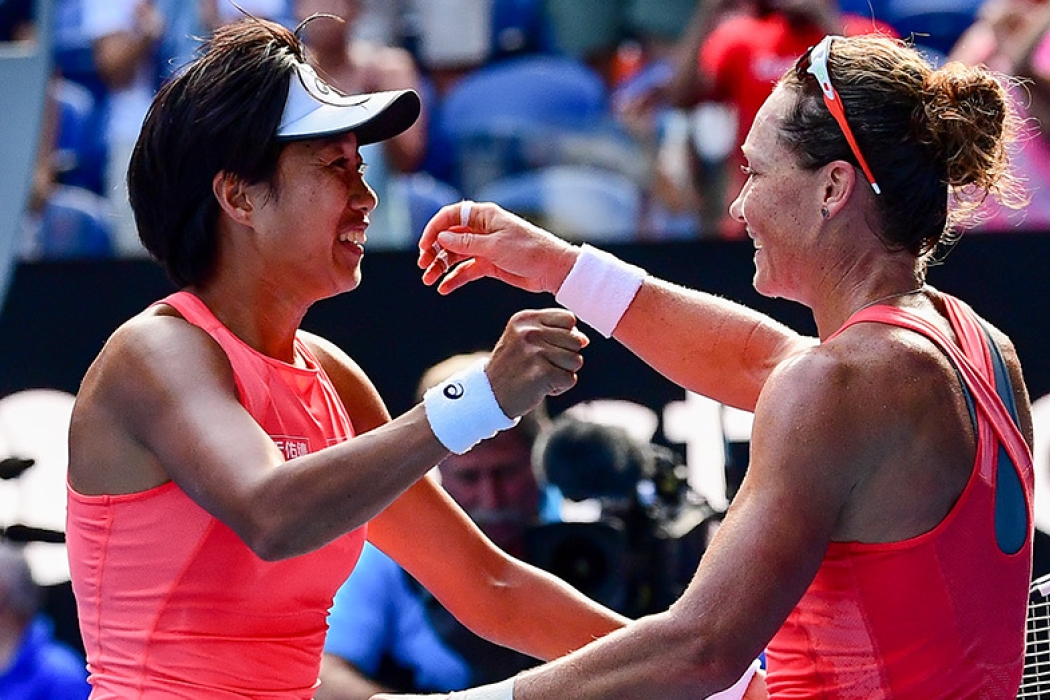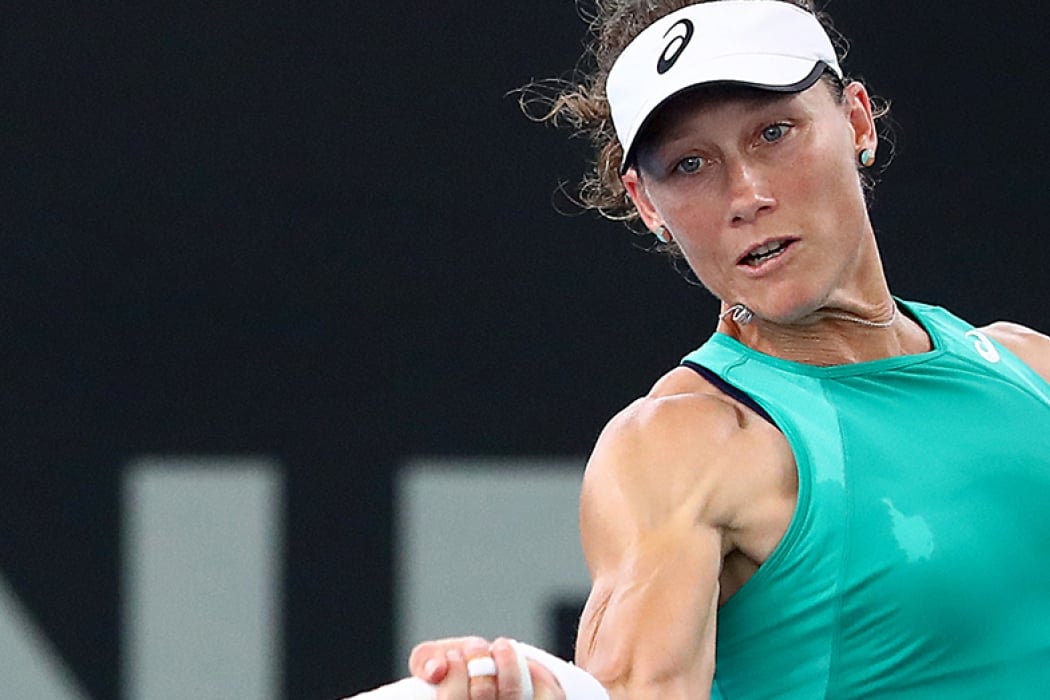A magnificent pro career concluded on Saturday at Australian Open 2023, when Sam Stosur officially hung her racquets up after more than 20 years on the professional tour.
“I did way more than what I thought I'd do as a kid, even though you kind of dream things,” Stosur told ausopen.com.
MORE: All the scores from AO 2023
“I'm super proud of the achievements I had, the wins, and again, I feel like I've gone about it in a way that's been good for me, and respected by a lot of people.
“I was talking to Alison Riske-Amritraj, and she's like, ‘are you still playing?’ And I was like ‘oh, no, I'm gonna be finished next week’. And she said, ‘oh my God, your career’, and I was just like, ‘I know, I had a good run’. And she goes: ‘A good run? Are you joking?!’
“You never really allow yourself to think about that, but I know for sure there's players out there that would kill to have my career.”
Stosur’s last match came alongside Matt Ebden in mixed doubles at Melbourne Park, where the Australian pairing fell 4-6 6-3 [10-6] to Demi Schuurs and Nikola Mektic in the first round.
It was somewhat symbolic for it to have ended here, for the Australian Open mixed doubles event was the very first Grand Slam title she won.
It would be the first of many.
Combining with Scott Draper, Stosur capped a brilliant 2005 summer with that mixed doubles crown, after back-to-back WTA singles finals on the Gold Coast and in Sydney.
Sixteen years later, Stosur was still thriving in that same event, as she and Ebden progressed to the AO 2021 mixed doubles final. They repeated the feat at Wimbledon in 2022, with Stosur aged 38.
Stosur would end her career with eight Grand Slam trophies – one in singles, four in women’s doubles, and three in mixed.
But back to 2005, a seminal season for the popular Aussie.
Following her success Down Under, she combined with Lisa Raymond for her first Grand Slam women’s doubles title at the US Open. She and Raymond also won at Roland Garros in 2006, the same year Stosur became the women’s doubles world No.1.
Singles success
Season 2005 was when Stosur truly began establishing herself in singles, the discipline in which she achieved her highest highs and greatest global recognition.
Her success was perhaps surprising, given she was never a top-25 junior; she recalls a challenging international junior tour in which she struggled simply to win a match.
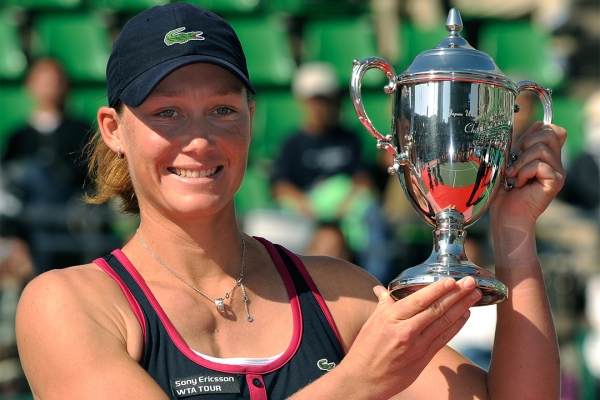
“I was completely out of my depth … but I knew I could stick it out and do it,” Stosur said.
“I don't know why, because I got beaten really easily nearly every week and didn't know what I was doing, but it just started getting better and better.
“My coach at home was hugely supportive and [had] belief in me and my coaches at every point in time I think had that belief.
“That always then helped instill that, I guess, in myself.”
In addition to those first two WTA singles finals in January, 2005 was the year Stosur cracked the top 50, before going on to peak at No.27 in 2007.
Her career was derailed at that peak by illness, when she suffered a debilitating set of ailments connected to Lyme disease, stemming from a tick bite.
Thankfully, she regained her health, resumed competing in 2008, and re-ascended.

In 2009, she overpowered Elena Dementieva en route to her first Grand Slam singles semifinal at Roland Garros, ending the year at world No.13 after capturing her first career singles title in Osaka.
The following year, she affirmed her love of clay in a resonant spring season.
Her 6-0 6-3 demolition of Vera Zvonareva in the Charleston final was perhaps the finest performance of her career, and contributed to her sparkling 20-3 record on clay in 2010.
“Women’s tennis hadn’t seen a kick serve like that until Sam came along, and it gave her the opportunity to find her forehand,” Todd Woodbridge told ausopen.com.
“In her prime, that combination delivered the best 1-2 punch the women’s game had seen.”
Wins over future- and then-greats Simona Halep, Justine Henin, Serena Williams and Jelena Jankovic propelled Stosur into her first major singles final in Paris, where she eventually fell to Francesca Schiavone.
But despite the devastation of that loss, she also learned from it.
A 1-2 punch like no other
In the 2011 US Open final, she beat Williams again, becoming the first Australian female Grand Slam singles champion in 31 years.
It also means Stosur joins an exclusive group – alongside Henin and Jennifer Capriati – who retired with a winning record over the great Williams at Grand Slam tournaments.
“Especially my second serve, I think it was a huge weapon of mine and right from being young, I could hit a kick serve,” Stosur said, when told of Woodbridge’s comments.
“And [that with] my forehand combo, I think [coach] Dave [Taylor] was the one who really started getting me to understand how to use those two things together to make it a real weapon.
“I've always practised being good at those two things in particular. Obviously, you've got to practise your whole game, but I think you win with your weapons… I think it helps when you always enjoy practising anyway.
“[I was always] just trying different things or working out different combos and stuff. That was always my intention.
“Give me a forehand any day of the week.”
Stosur peaked at world No.4 in singles and was a top-10 mainstay from 2010 to 2012.
She reached at least the quarterfinal stage at seven majors, and the semifinal stage four times alone at Roland Garros – including a resurgent run to the last four in Paris in 2016.
She also seemed a genuine threat for the 2017 Roland Garros title.
Having won the WTA Strasbourg title, she stormed into the fourth round in Paris and took the first set 6-2 over eventual champion Jelena Ostapenko, only to begin feeling the effects of a right-hand stress fracture that would sideline her for months.
Stosur admitted she never hit the ball the same following that freak injury.
But while her singles results tapered off, she continued to thrive in doubles.
Australian Open memories
There were few more emotional moments than watching her combine with good friend Zhang Shuai to win her first Australian Open women’s doubles title in 2019 – 13 years after holding match points, yet losing, with Raymond in the 2006 decider.
It was also heartening given the commentary around her singles struggles at her home Grand Slam tournament.
Yet her record at Melbourne Park was better than the narrative suggested.
She debuted in qualifying in 2000 – 23 years ago! – and the main draw in 2002, knowing she had a shot at Martina Hingis in the second round, only to lose to Greta Arn in three sets.
She would eventually get her wish, facing Hingis in a 2006 fourth-round blockbuster under lights at Rod Laver Arena, where she pushed the Swiss in a 6-1 7-6(8) loss.
She returned to the second week in 2010, falling to eventual champion Williams.
Stosur played 24 singles matches at Rod Laver Arena, finishing with a winning record on the tournament’s premier court. Her most notable wins came over Ana Ivanovic and Sabine Lisicki.
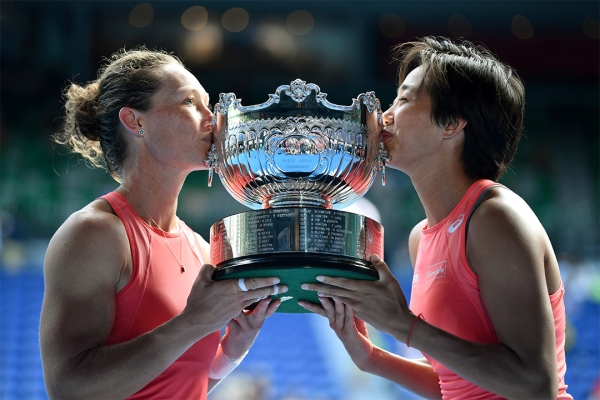
“Greta was a good player but I was just like, 'no I have to play Hingis in the next round' and so that was a good learning curve … not to get ahead of yourself and look ahead in the draw,” Stosur recalled of 2002 with a smile.
“I do remember eventually playing Hingis in the fourth round here. Then many good memories; I beat Conchita Martinez on one of the outside courts, and she was a world-class player then when I beat her.
“I've had some really great moments in singles, doubles and mixed obviously here, throughout my whole career.
“No way did I think 21 years later I'd still be here.”
But perhaps it is unsurprising Stosur’s career spanned the length it did.
Lauded for her supreme fitness and conditioning, she mostly avoided serious injury throughout her playing days.
She played more than 1000 singles matches across all professional levels yet retired from just three – and only one in the past 16 years.
She loved all elements that came with being a professional: the physical training, the on-court sessions, the process of technical refinement, and other efforts to maximise her game such as video analysis, tinkering with equipment, biomechanics and sports science.
She enjoyed playing on big stadiums in front of thousands of people, recognising that not only was she playing for her own career, but also to entertain others.
And she consistently succeeded on those stages, winning nine career singles titles, scoring 31 wins over top-10 opponents, and finishing 16 consecutive seasons inside the world’s top 100.
Most of all, she simply loved the game.
“I just always had this desire that I was going to be a tennis player,” Stosur said.
“I played tennis because I loved to play tennis, and I wanted to do this as a life, and I've got so much more out of it than what I ever would have expected.

“On the court, off the court, people I've met, people I've worked with. Everything about it has been incredible.
“I'm in a pretty lucky position to be in, to do what I've done. And really couldn't ask for any more. I know I've done everything I can to be the best I can at any given moment.
"So, I can be happy.”
